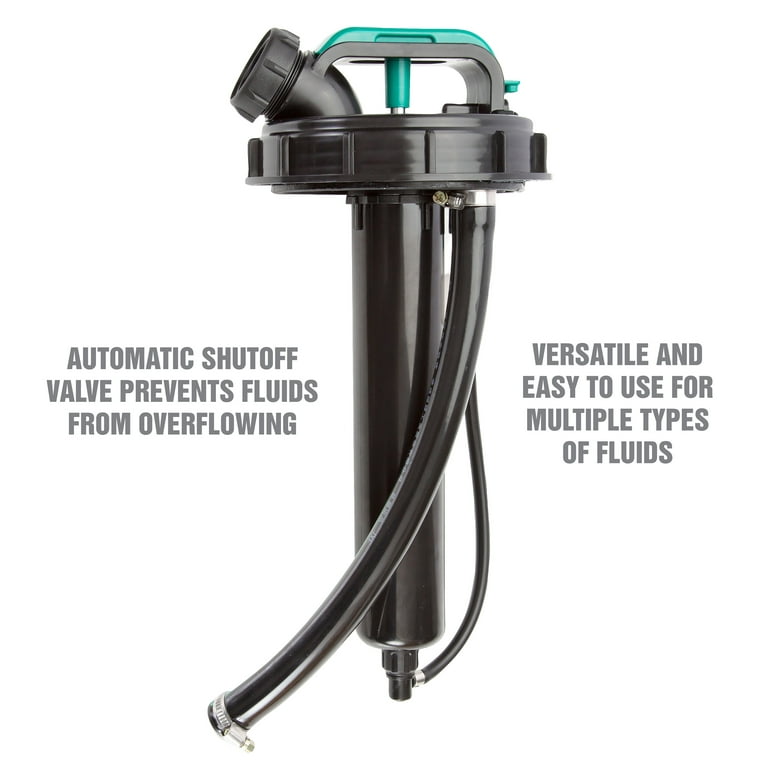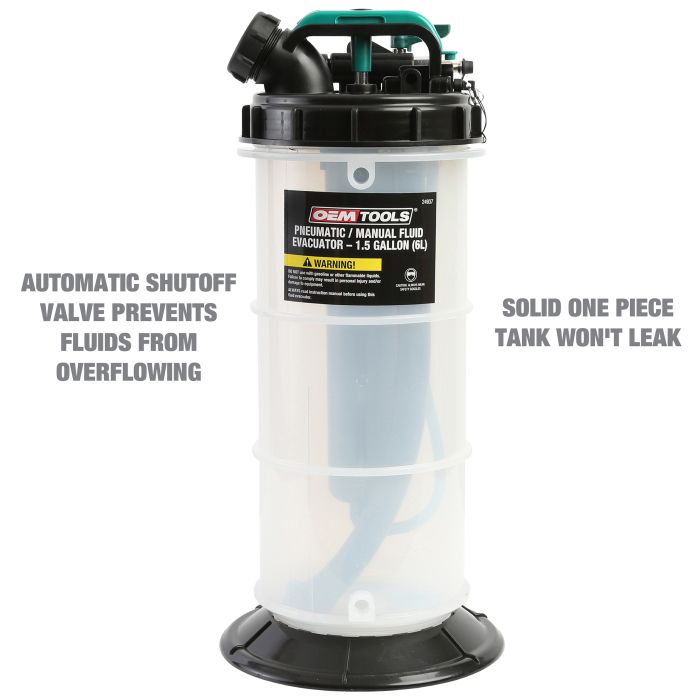Power Steering Overflows When Shut off
Power steering overflows when shut off due to a possible issue with the pressure release valve. This problem can lead to excess fluid leaking from the system, causing overflow.
When facing a power steering overflow, it is essential to address the root cause promptly to prevent potential damage to the system. The power steering system plays a crucial role in ensuring smooth and effortless steering while driving. However, if left unattended, an overflow in the power steering system can lead to further complications and affect the performance of the vehicle.
We will explore the common reasons behind power steering overflows and provide actionable tips on how to troubleshoot and resolve this issue effectively. By understanding the causes and solutions for power steering overflows, you can maintain the health and functionality of your vehicle’s steering system.

Credit: www.amazon.de
What Is Power Steering Overflow?
The power steering overflow occurs when the fluid in the power steering reservoir overflows after the vehicle has been shut off. This can lead to leaks and potential damage if left unattended. Understanding the causes and impact of power steering overflow is essential for maintaining the vehicle’s steering system.
Causes Of Power Steering Overflow
Improper fluid levels, a faulty reservoir cap, or air trapped in the system can cause power steering overflow. Additionally, excessive heat or a clog in the steering system can also result in fluid overflow.
Impact Of Power Steering Overflow
Power steering overflow can lead to leaks, which can cause damage to the steering components and affect the vehicle’s maneuverability. It can also result in a loss of power steering fluid, leading to decreased performance and potential safety hazards.
How To Diagnose A Power Steering Overflow Issue
When experiencing power steering overflow after shutting off your vehicle, it is important to diagnose the issue promptly to prevent further damage. Below are steps to help you identify and troubleshoot the problem.
Check Power Steering Fluid Level
- 1. Park your car on a level surface.
- 2. Locate the power steering fluid reservoir.
- 3. Check the fluid level against the recommended markings.
- 4. Top up the fluid if it is below the minimum level.
Inspect Power Steering Hoses And Connections
- 1. Visually examine the hoses for any signs of leaks or damage.
- 2. Ensure all connections are secure and tight.
- 3. Replace any worn-out hoses or faulty connections.
Test Power Steering Pump
- 1. Start the engine and turn the steering wheel from left to right.
- 2. Listen for any unusual noises coming from the pump.
- 3. Observe if the steering feels stiff or unresponsive.
- 4. Consider professional inspection if issues persist.
What Causes Power Steering Overflow
Power steering overflow can occur due to various reasons. Understanding what causes the issue is essential for ensuring the proper functioning of your car’s power steering system.
Overfilled Power Steering Fluid Reservoir
An overfilled power steering fluid reservoir can lead to overflow when the system is shut off. Excessive fluid levels put pressure on the system, leading to leaks and overflow.
Faulty Power Steering Pressure Relief Valve
A faulty power steering pressure relief valve may fail to regulate the pressure within the system correctly. This can result in excess pressure buildup, causing the power steering fluid to overflow.
Malfunctioning Power Steering Pump
A malfunctioning power steering pump can also contribute to power steering overflow. If the pump is not operating efficiently, it may cause fluctuations in pressure, leading to overflow when the car is turned off.
Effects Of Power Steering Overflow
When the power steering system overflows, it can lead to various effects that can impact the performance and safety of your vehicle. Understanding these effects is crucial in ensuring the proper maintenance and functioning of the power steering system.
Loss Of Power Steering Assist
Overflowing power steering fluid can result in a loss of power steering assist, making it difficult to steer the vehicle, especially at lower speeds or when parking. This can pose a safety risk and make it challenging to maneuver the vehicle effectively.
Potential Damage To Power Steering System Components
Excessive overflow can lead to potential damage to various power steering system components, including the pump, hoses, and seals. This can result in leaks, increased wear and tear, and ultimately, a compromised power steering system that may require costly repairs or replacement.
How To Fix And Prevent Power Steering Overflow
If you’re experiencing power steering overflow when shutting off your vehicle, it’s important to address the issue promptly. Excess power steering fluid can lead to inefficient steering, damage to components, and potential safety hazards. Fortunately, there are several steps you can take to fix the problem and prevent it from occurring in the future. In this article, we will discuss how to drain excess power steering fluid, repair or replace faulty components, and the importance of regular maintenance and fluid level checks.
Drain Excess Power Steering Fluid
The first step in fixing power steering overflow is to drain the excess fluid. To do this, follow these simple steps:
- Park your vehicle on a level surface and engage the parking brake.
- Locate the power steering fluid reservoir. It is usually located near the engine, and you can identify it by the power steering fluid cap.
- Remove the cap and use a fluid extraction pump or a turkey baster to siphon out the excess fluid.
- Dispose of the excess fluid properly according to local regulations.
- After draining the excess fluid, make sure the power steering fluid level is within the recommended range. If necessary, add more fluid to bring it to the appropriate level.
Repair Or Replace Faulty Components
If power steering overflow persists even after draining the excess fluid, it may indicate a problem with the power steering system components. Here are some common faulty components that can cause power steering overflow:
| Component | Symptoms | Actions |
|---|---|---|
| Power Steering Pump | Whining noise, difficulty turning the steering wheel | Inspect and replace if necessary |
| Pressure Relief Valve | Leaking fluid, inconsistent power steering | Repair or replace the valve |
| Steering Rack | Fluid leaks, uneven steering | Inspect and repair or replace if needed |
If you are unsure about diagnosing or repairing faulty components, it is recommended to consult a professional mechanic who can provide expert assistance.
Regular Maintenance And Fluid Level Checks
Preventing power steering overflow involves regular maintenance and fluid level checks. Follow these tips to keep your power steering system in top condition:
- Check the power steering fluid level regularly. Ensure it is within the recommended range.
- If you notice any leaks or unusual noises, have the power steering system inspected by a qualified mechanic.
- Follow the manufacturer’s recommended service intervals for power steering fluid replacement.
- Inspect hoses and connections for any signs of wear or damage. Replace if necessary.
- Keep your vehicle’s power steering system clean and free from debris.
By following these steps and staying proactive with your power steering system maintenance, you can prevent power steering overflow and ensure smooth and safe steering in your vehicle.

Credit: www.walmart.com

Credit: www.greatnecksaw.com
Frequently Asked Questions Of Power Steering Overflows When Shut Off
Why Does My Power Steering Fluid Overflow?
The power steering fluid may overflow due to excessive pressure or overfilling in the system. It could also be caused by a malfunctioning power steering pump or a blocked or damaged steering gear or hose. Regular maintenance and checking fluid levels can help prevent overflow issues.
Why Does My Power Steering Go Out When I Stop?
Your power steering may go out when you stop due to low fluid levels or a failing pump. When the car is not moving, the pump may not generate enough pressure to assist steering. This issue requires immediate attention to prevent potential safety hazards.
Why Does A Power Steering Pump Pushing Fluid Out Fill Cap?
A power steering pump pushes fluid out of the fill cap due to excess pressure buildup. This can be caused by a blockage or a malfunctioning pump. Regular maintenance and proper fluid levels can help prevent this issue.
Why Does My Power Steering Fluid Keep Draining?
If your power steering fluid keeps draining, it could be due to a leak in the system. Check hoses, connections, or the power steering pump for potential issues. Addressing leaks promptly can prevent further damage to the power steering system.
Why Does The Power Steering Overflow When Shut Off?
The power steering system may overflow when shut off due to excessive fluid pressure or a faulty pressure relief valve.
What Are The Common Causes Of Power Steering Overflow?
Common causes of power steering overflow include a damaged or worn-out power steering pump, a clogged or malfunctioning pressure relief valve, or overfilling the power steering fluid reservoir.
How Can I Fix Power Steering Overflow Issues?
To fix power steering overflow issues, check for any leaks, ensure the power steering fluid is at the correct level, replace a faulty pressure relief valve, or consult a professional mechanic for further diagnosis and repairs.
Conclusion
Addressing power steering overflow when the engine is shut off is crucial for maintaining optimum vehicle performance. Regular inspection and maintenance of the power steering system are essential to prevent issues and avoid potential safety hazards. By implementing proper care and addressing any issues proactively, drivers can ensure smooth and safe operation of their vehicles.
